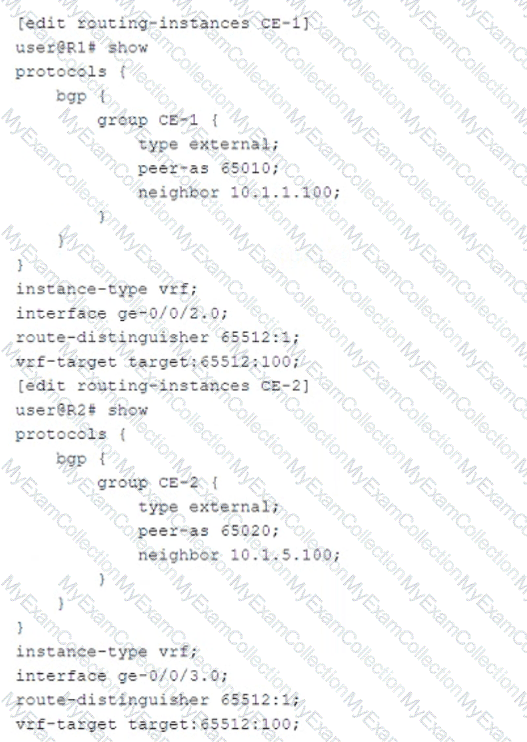ExhibitÂ
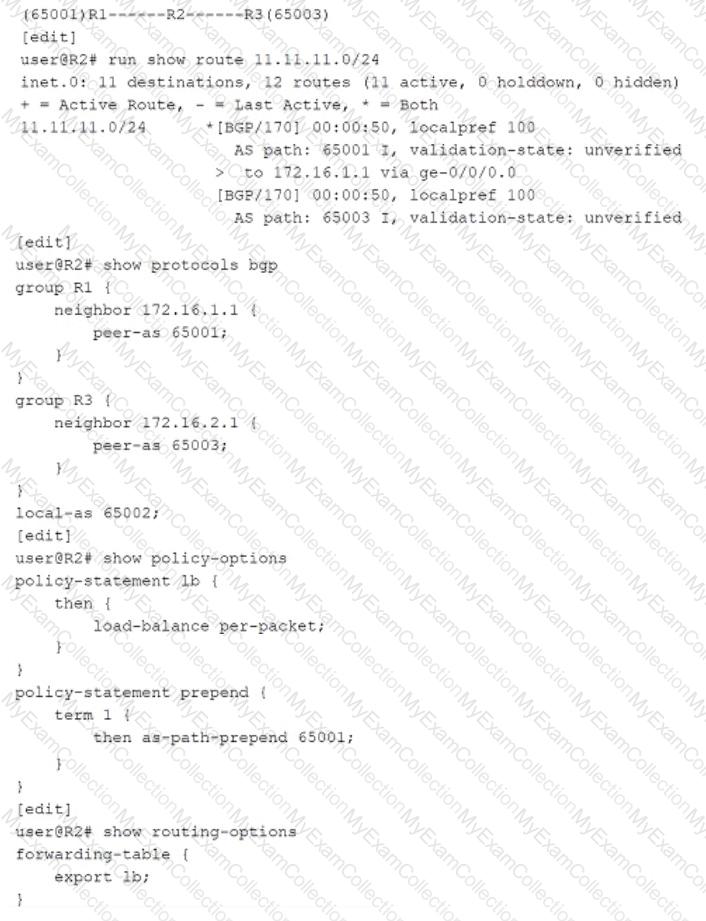
R2 is receiving the same route from R1 and R3. You must ensure that you can load balance traffic for that route.
Referring to the exhibit, which configuration change will allow load balancing?
Click the Exhibit button.

You enabled a new router (R3) in your network but all destinations using IS-IS routes are not properly load balancing over this new router.
Referring to the exhibit, what is the problem?
Exhibit
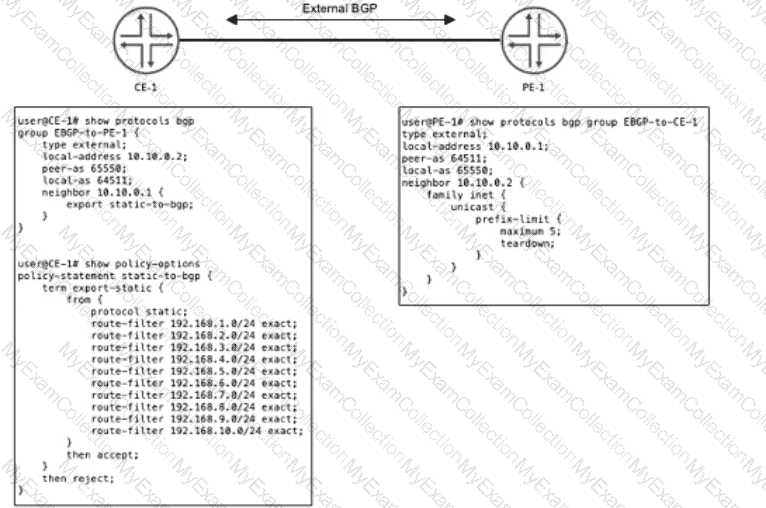
CE-1 must advertise ten subnets to PE-1 using BGP Once CE-1 starts advertising the subnets to PE-1, the BGP peering state changes to Active.
Referring to the CLI output shown in the exhibit, which statement is correct?
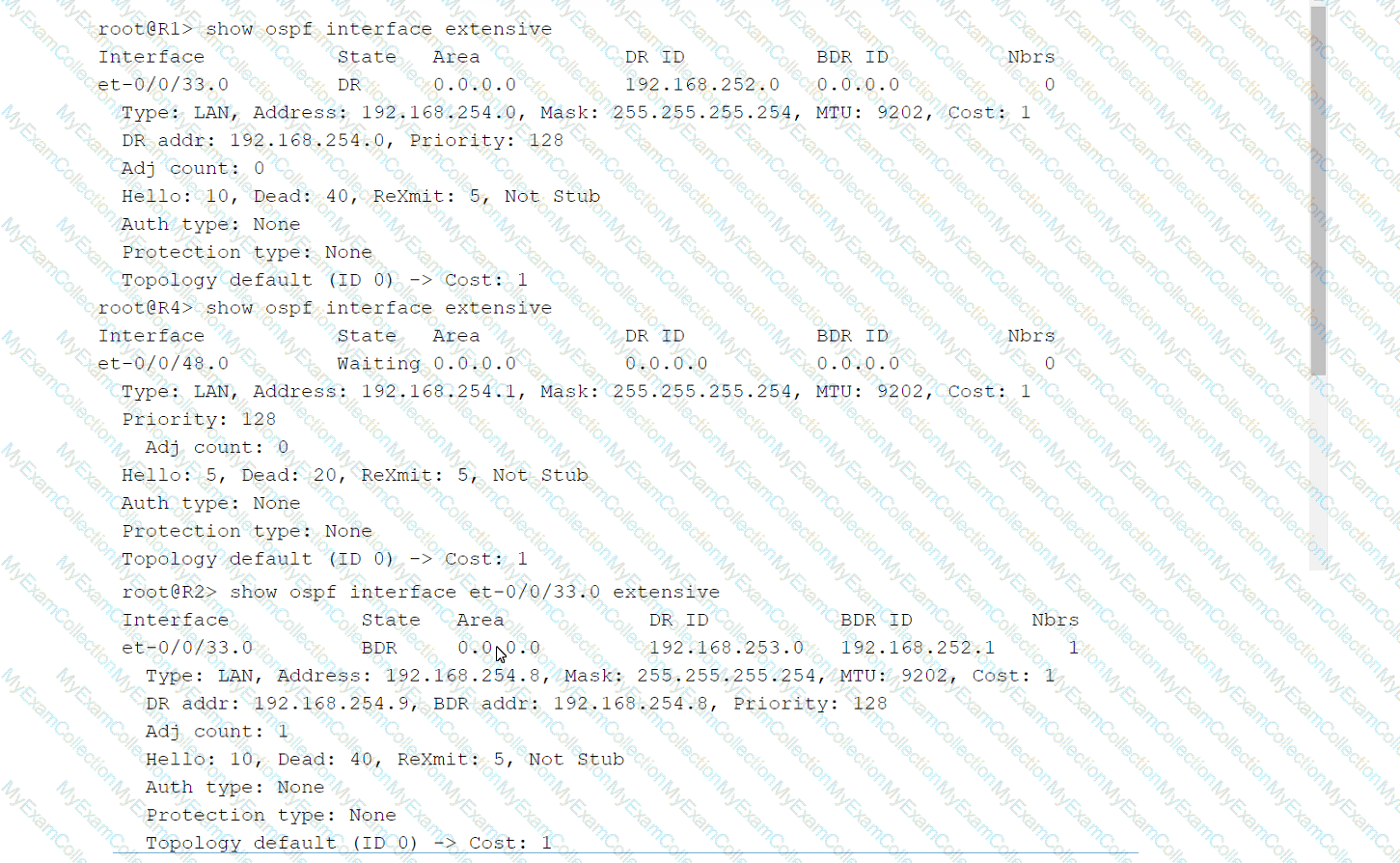
Click the Exhibit button.
You have an OSPF environment. You have recently added a router called R4 that is directly connected to R1 and R2. You discover that R4 is only peering with R2.
Referring to the exhibit, how would you correct the peering?
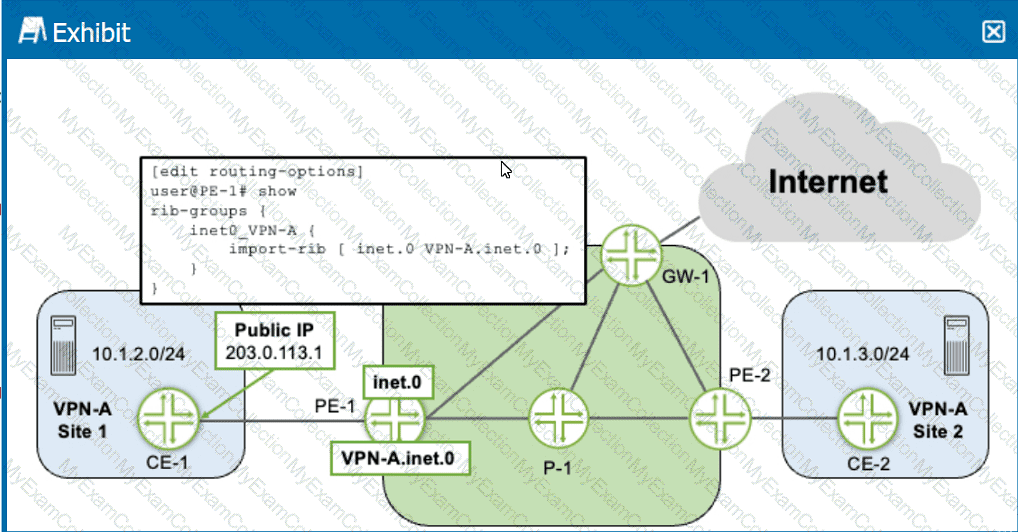
Click the Exhibit button.
Referring to the exhibit, you must provide VRF Internet access over a single connection for VPN-A Site 1, which connects to PE-1.
Which two statements are correct in this scenario? (Choose two.)
Exhibit
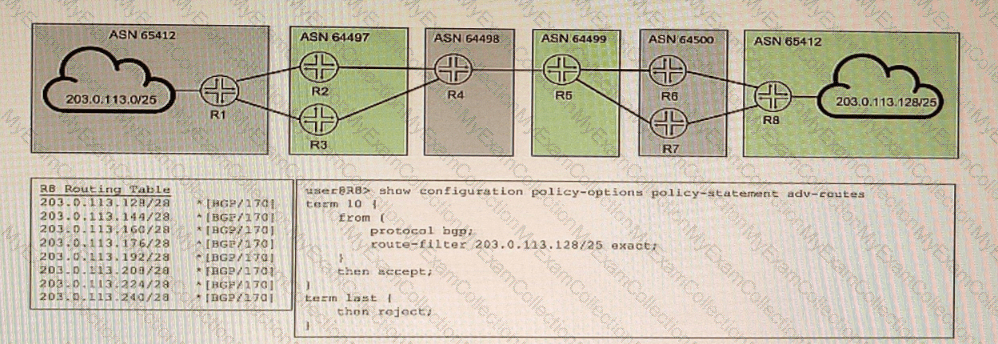
You are attempting to summarize routes from the 203.0.113.128/25 IP block on R8 to AS 64500. You implement the export policy shown in the exhibit and all routes from the routing table stop being advertised.
In this scenario, which two steps would you take to summarize the route in BGP? (Choose two.)
A packet is received on an interface configured with transmission scheduling. One of the configured queues In this scenario, which two actions will be taken by default on a Junos device? (Choose two.)
Exhibit

Referring to the exhibit, PE-1 and PE-2 are getting route updates for VPN-B when neither of them service that VPN
Which two actions would optimize this process? (Choose two.)
In which two ways does OSPF prevent routing loops in multi-area networks? (Choose two.)
Exhibit
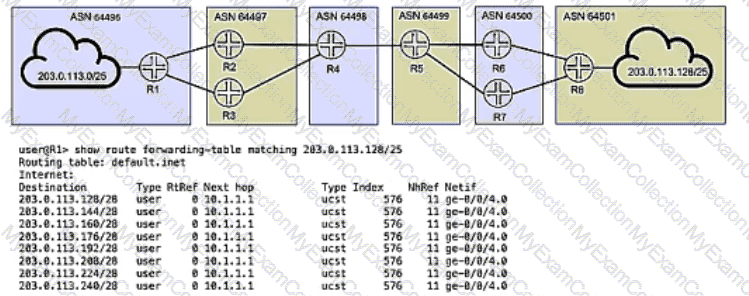
You are troubleshooting the connection between AS 64496 and AS 64497 and notice that only one of the paths is being used for traffic forwarding.
Referring to the exhibit, which three actions will ensure that R1 is configured properly for load balancing BGP routes? (Choose three.)
Exhibit
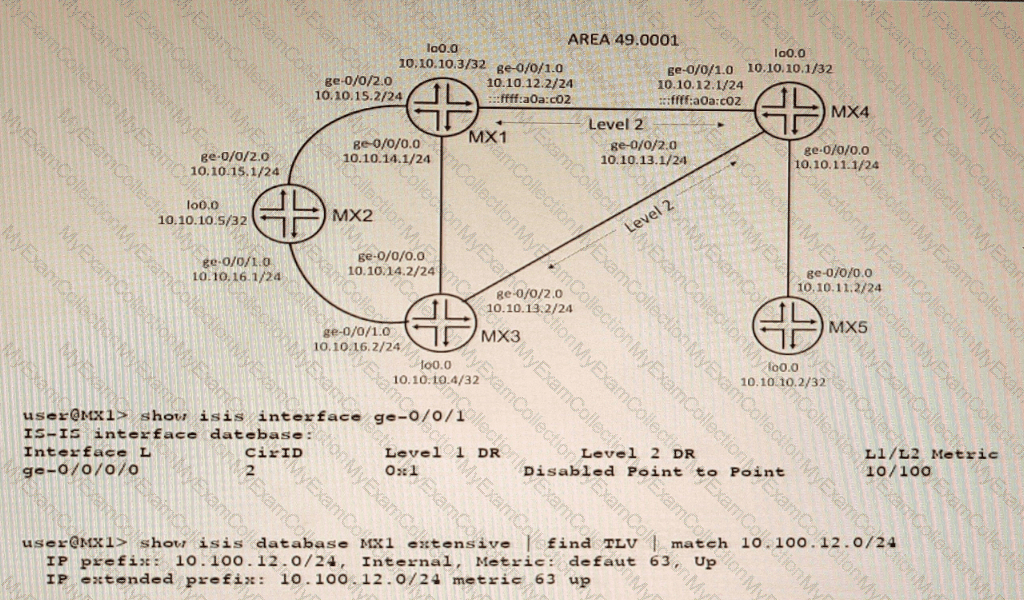
A network is using IS-IS for routing.
In this scenario, why are there two TLVs shown in the exhibit?
Exhibit
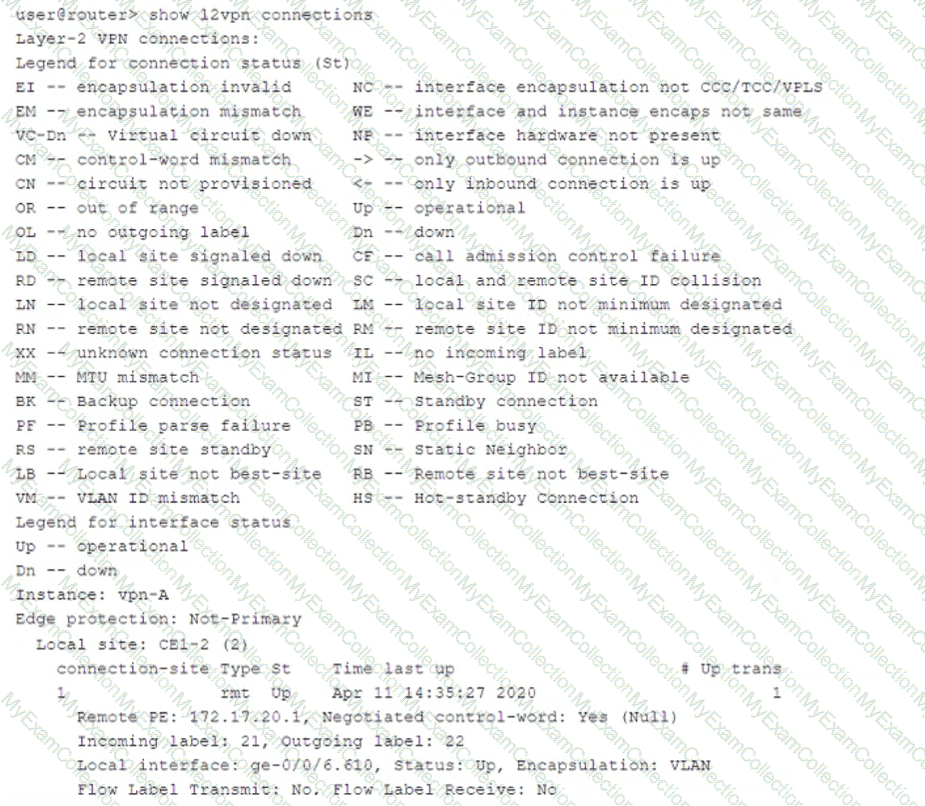
Which two statements about the output shown in the exhibit are correct? (Choose two.)
Exhibit
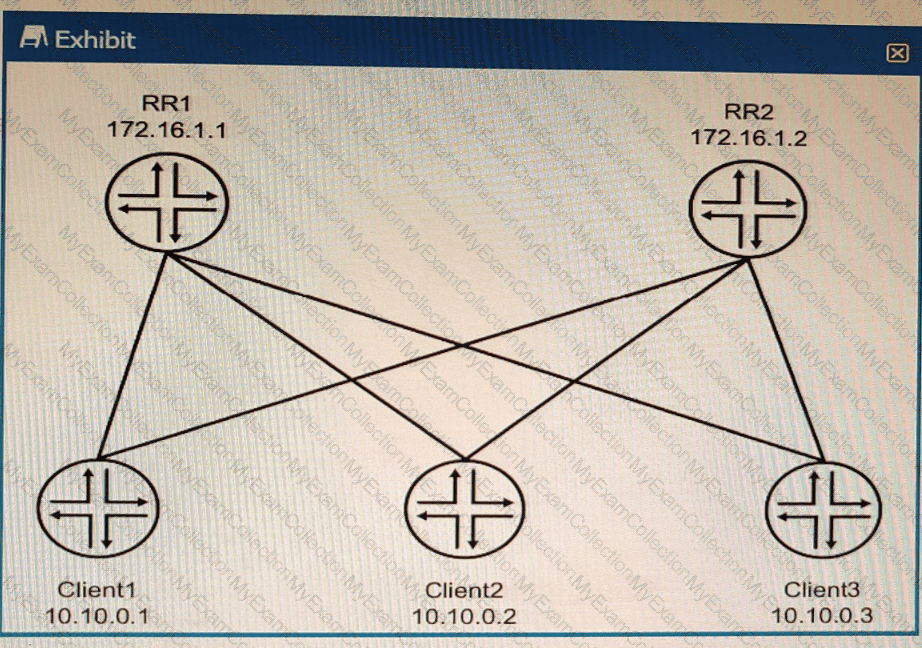
The environment is using BGP All devices are in the same AS with reachability redundancy Referring to the exhibit, which statement is correct?
Exhibit

R1 and R8 are not receiving each other's routes
Referring to the exhibit, what are three configuration commands that would solve this problem? (Choose three.)
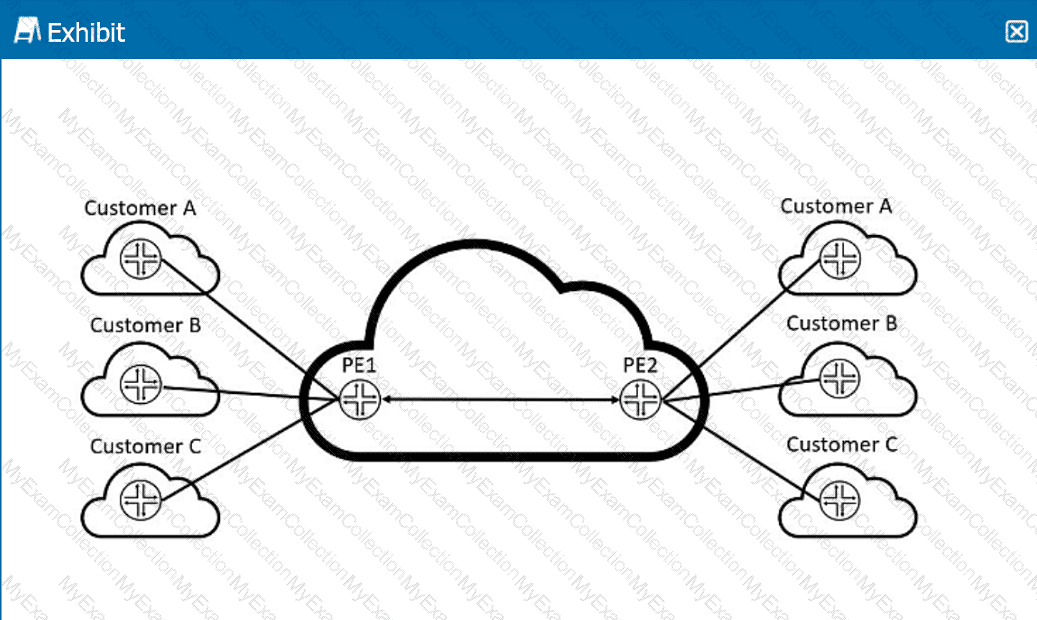
Click the Exhibit button.
After adding Customer C to your Layer 3 VPN, you must ensure that PE2 is receiving VPN routes for all customers attached to PE1, as shown in the exhibit.
Which operational command displays this information?
You are responding to an RFP for a new MPLS VPN implementation. The solution must use LDP for signaling and support Layer 2 connectivity without using BGP The solution must be scalable and support multiple VPN connections over a single MPLS LSP The customer wants to maintain all routing for their Private network
In this scenario, which solution do you propose?
Exhibit
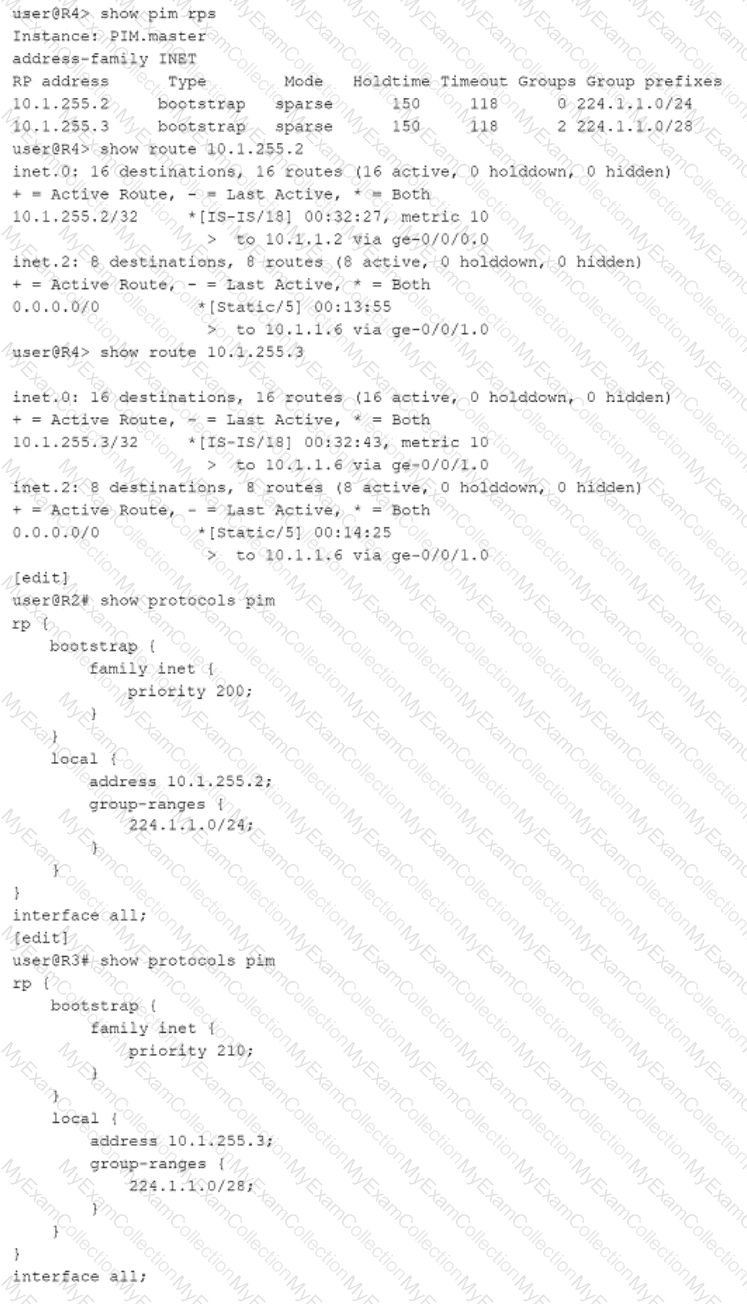
R4 is directly connected to both RPs (R2 and R3) R4 is currently sending all ,o,ns upstream to R3 but you want all joins to go to R2 instead Referring to the exhibit, which configuration change will solve this issue?
An interface is configured with a behavior aggregate classifier and a multifield classifier How will the packet be processed when received on this interface?
Which three statements about IS-IS in a multi-area network are correct? (Choose three.)
You are configuring a Layer 3 VPN between two sites. You are configuring the vrf-target target : 65100:100 statement in your routing instance.
In this scenario, which two statements describe the vrf-target configuration? (Choose two.)
Which two statements are correct about reflecting inet-vpn unicast prefixes in BGP route reflection? (Choose two.)
Exhibit

Referring to the exhibit, which three statements are correct about route 10 0 0.0/16 when using the default BGP advertisement rules'? (Choose three.)
A router running IS-IS is configured with an ISO address of 49.0001.00a0.c96b.c490.00.
Which part of this address is the system ID?
